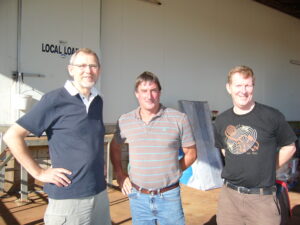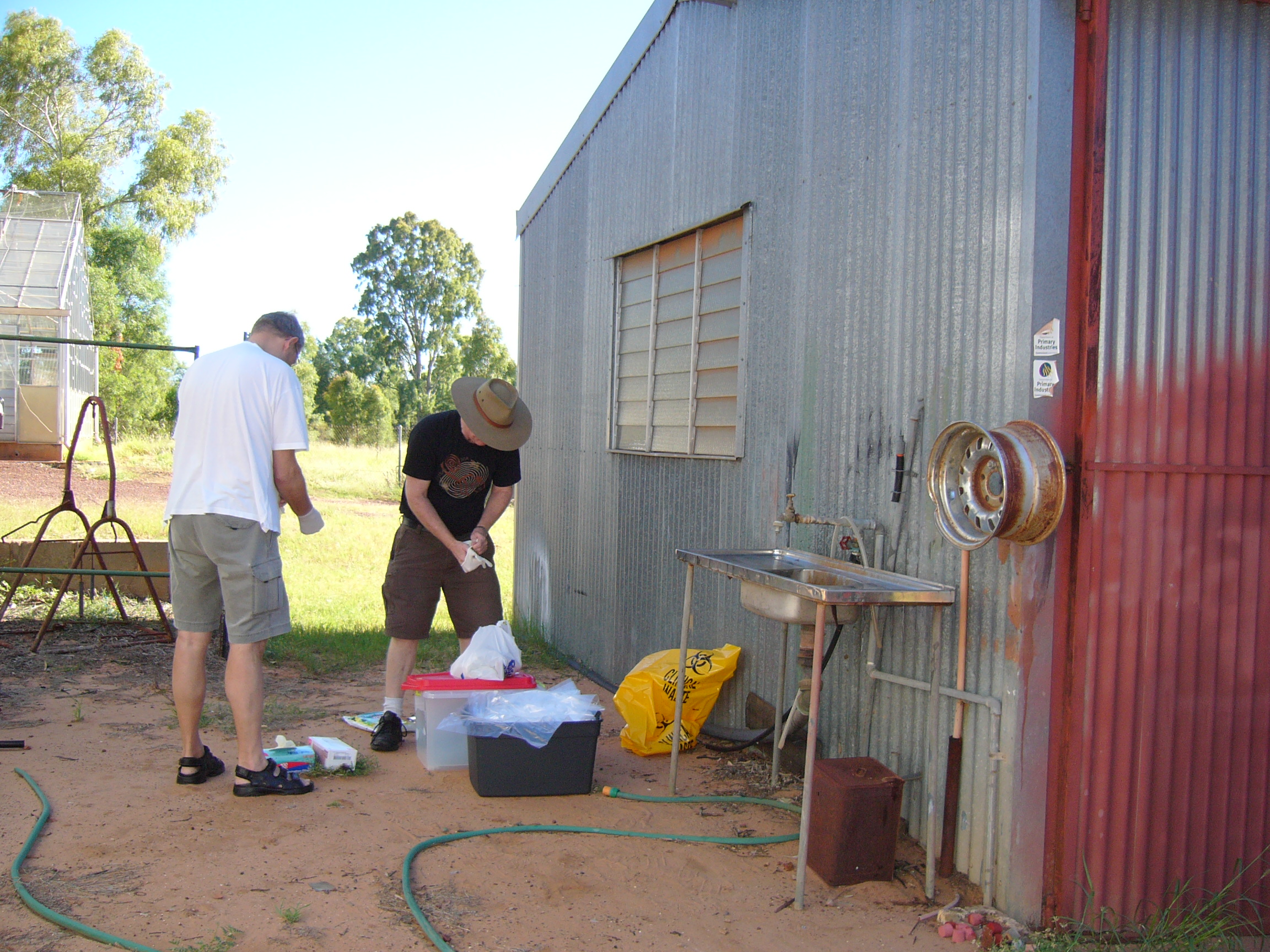Preliminary sampling results of Macropus spp.
 A total of 28 kangaroos including 10 red (Macropus rufus) and 18 eastern grey kangaroos (Macropus gigantus) from three epidemiologically independent geographical areas (Ingelwood, Charleville and Roma) were investigated.
A total of 28 kangaroos including 10 red (Macropus rufus) and 18 eastern grey kangaroos (Macropus gigantus) from three epidemiologically independent geographical areas (Ingelwood, Charleville and Roma) were investigated.
If possible, swabs were obtained from the tonsils and the upper part of larynx. Due to shooting of the kangaroos in the head these sampling sites were not always available, and swabs were instead taken from the mucosa at the basis of the tongue and/or posterior part of pharynx.
Samples were plated in parallel onto blood agar and a selective agar designed for detection of Pasteurellaceae. Surprisingly, Pasteurellaceae-like organisms obtained were dominated by V-factor dependent isolates. In addition, most of these also demonstrated V-factor dependence on media supplied with V-factor allowing the growth of all presently known V-factor dependent taxa. Detection of these organisms seems to depend on the concomitant flora (see fig.). A total of 51 V-factor dependent isolates have been obtained. In addition, 44 isolates of Pasteurellaceae-like isolates have been kept for further investigations.
Preliminary partial sequencing of 16S rRNA form 3 isolates showed that these isolates formed a separate clade with isolates obtained from red-necked wallabies (Macropus rufogriseus) sampled in Copenhagen Zoo.
In the coming months the 95 isolates from Australia will be characterized both pheno- and genotypically, and results obtained compared with those obtained from wallabies form Copenhagen Zoo.
